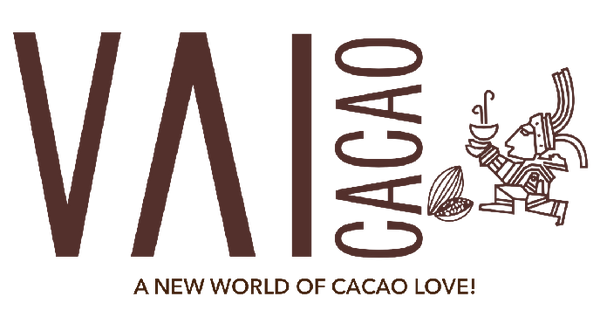Beyond "Maya" and "Aztecs" in Cacao: Understanding the Rich and Often Oversimplified Cultural Heritage of Mesoamerica (Part of Present-Day Central America)
In recent years, ceremonial cacao paste has gained increasing popularity, often associated almost exclusively with the Maya people.
Many individuals around the world emphasize this aspect, adopting rituals that never historically existed and perpetuating the notion that only the Maya have the right to speak about "ceremonial cacao." Nothing could be more simplistic or inaccurate. This exclusive attitude further fuels skepticism about the functional benefits cacao can offer in such contexts.
Those who truly know Central America and its vast cultural diversity are well aware that this oversimplification does not reflect reality. It is often propagated by those who have established a "spiritual business" built on haphazard mentions of the Maya to create storytelling and marketing narratives aimed at attracting individuals sensitive to indigenous themes.
This excessive "Mayanization" simplifies the complex history of Mesoamerica, ignoring the significance of cacao for many other native civilizations such as the Aztecs, Nahua-Pipil, Lenca, Toltecs, and Mixtecs, to name just a few. These groups feel the weight of history and the added discrimination of not being regarded on the same level as the contemporary Maya.
Reducing the use of ceremonial cacao to a Maya-exclusive product not only diminishes the contributions of other peoples but also perpetuates a distorted narrative that fails to reflect the cultural diversity of the region. Each Mesoamerican civilization developed a unique connection with cacao, using it in ways that reflected their own spirituality and values.
Promoting ceremonial cacao with a more inclusive and respectful representation of its roots can enrich the experience of its users and honor the shared history of cacao in Mesoamerica.
Mesoamerica: The Land of Cacao
"Mesoamerica" is a historical region encompassing present-day central and southern Mexico, Guatemala, Belize, Honduras, El Salvador, and parts of Costa Rica and Nicaragua. This area was inhabited by numerous native peoples, each with distinctive histories and cultures. Unfortunately, the colonial period forever altered the region, forcing its native populations into segregation and marginalization, leading to the loss of their beliefs and cultures in favor of a new language, Spanish, and a monotheistic religion, Catholicism.
It’s also important not to confuse Mesoamerican cultures with South American ones. While the Americas are vast, Mesoamerican cultures did not necessarily have communication with those of South America.
The Great Cultural Diversity of Mesoamerica
Determining the exact number of indigenous groups in Mesoamerica is complex, given the numerous overlapping ethnic and linguistic identities. Historically, over 200 distinct ethnic groups are estimated to have existed in the region. Today, despite significant challenges, many of these groups persist, with some estimates recognizing over 100 officially acknowledged indigenous groups in Mesoamerican countries.
Recognizing this vast network of native peoples is essential for understanding the cultural and historical richness of the region. Each group contributed significantly to agricultural practices, artistic traditions, knowledge systems, social structures, and cosmology.
Attributing the cultural heritage of cacao solely to the Maya oversimplifies a complex historical reality and risks overshadowing the contributions of other cultures that played crucial roles in valuing and disseminating cacao.
The Connection to Ancient Mesoamerican Peoples
Olmecs (1500 BCE - 400 BCE)
-
Early Custodians of Cacao: Likely the first to domesticate cacao, using it in fermented beverages.
-
Sacred Significance: Associated with fertility and nature gods, cacao held a symbolic role in ceremonies, including funerary rites.
Maya (2000 BCE - 1500 CE)
-
Rituals and Cosmology: For the Maya, cacao was part of cosmic trees and used in ceremonies related to life, death, and the night.
-
Daily and Social Use: Cacao was prepared as a bitter, spiced water-based drink consumed by nobles, warriors, and priests.
-
Economy: Cacao beans were used as currency and widely traded.
Nahua-Pipil (El Salvador, Postclassic Period)
-
Trade Links: Cacao served as both ritual food and currency, highlighting its economic value.
-
Ceremonial Use: Integrated into rituals linked to land and harvests.
Aztecs (Mexica, 1300-1521 CE)
-
"Xocolatl": A spiced cacao drink reserved for nobles, warriors, and priests.
-
Valuable Currency: Cacao beans were highly prized as a medium of exchange.
Zapotecs and Mixtecs (Oaxaca)
-
Art and Cacao: Cacao featured in funerary and religious rituals.
-
Trade: Central to exchanges between mountainous and tropical regions.
Lenca (Honduras and El Salvador)
-
Agricultural Spirituality: Cacao was used in ceremonies to seek protection and fertility.
-
Oral Traditions: Stories and legends celebrated cacao as a sacred food.
Shared Cosmovisions
Despite differences among these cultures, cacao represented:
- Sacredness: A connection to the divine.
- Economics: A valuable resource and currency.
- Social Significance: A symbol of prestige and cultural identity.

